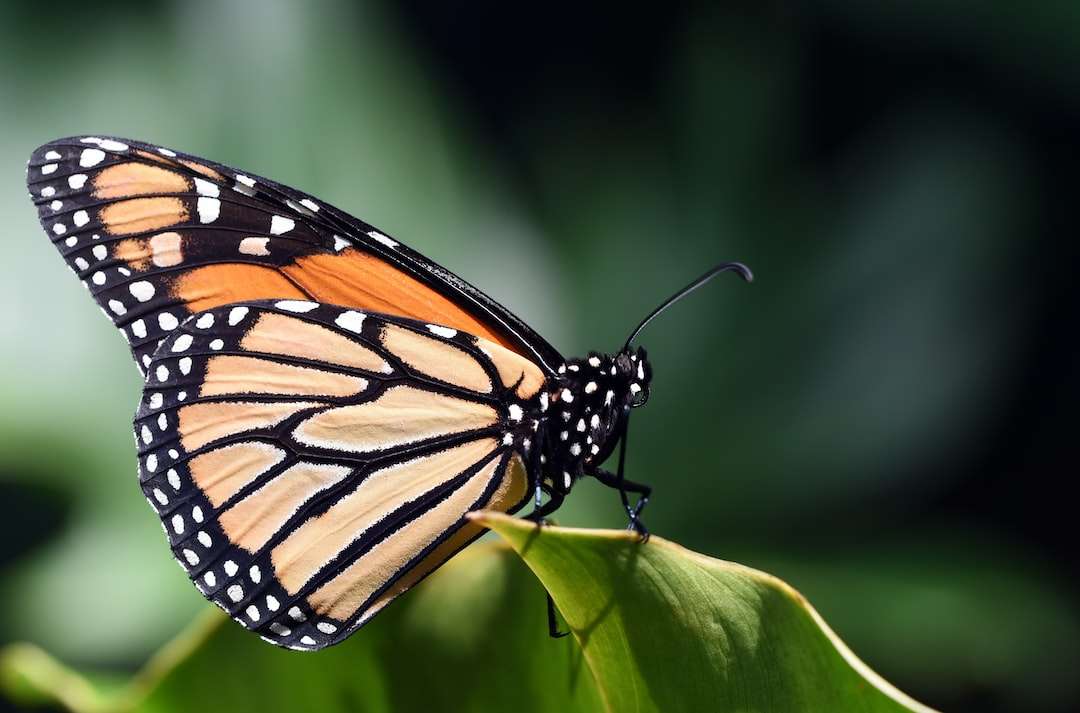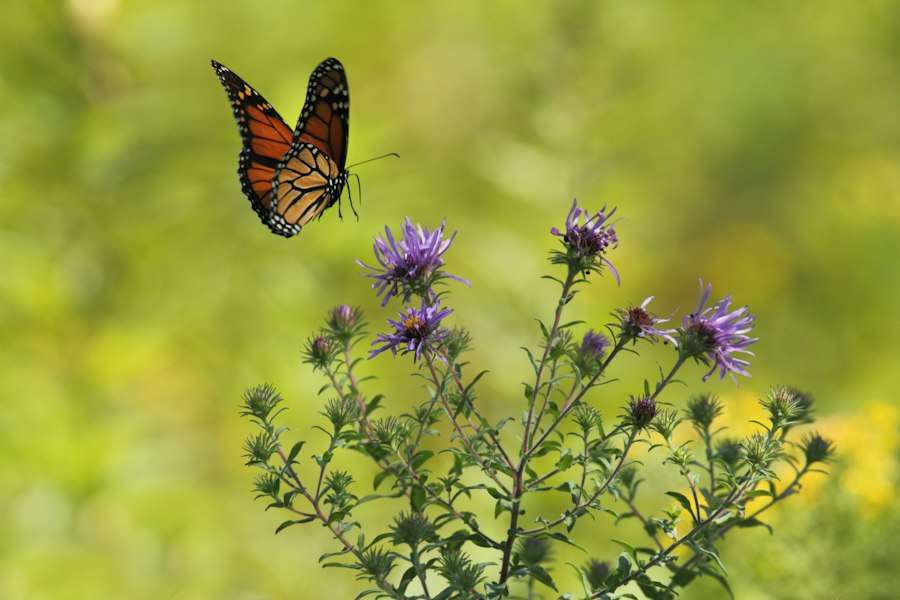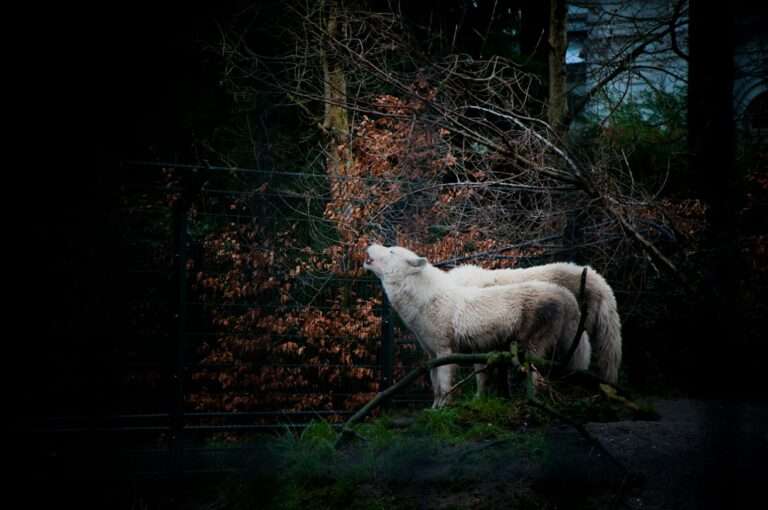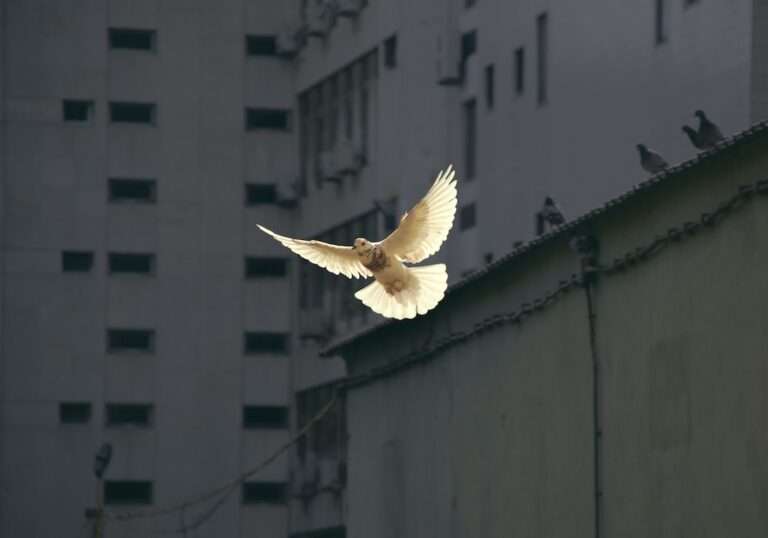The Art of Transformation: Exploring the Profound Symbolism of Butterflies

The butterfly is a symbol of transformation and change. Its journey from a caterpillar to a cocoon to a beautiful butterfly represents the process of personal growth and transformation. Throughout history, the butterfly has been used as a symbol of transformation in various cultures and has held spiritual significance in different belief systems. In this article, we will explore the symbolism and significance of the butterfly, both scientifically and spiritually, and how it can inspire us to embrace change and transformation in our own lives.
Key Takeaways
- The butterfly is a powerful symbol of transformation in many cultures.
- Scientifically, butterfly metamorphosis is a fascinating process of growth and change.
- The colors and patterns of butterflies hold symbolic meaning in many traditions.
- The butterfly’s journey from caterpillar to cocoon to butterfly is a metaphor for personal growth and change.
- The butterfly effect shows how small changes can lead to big transformations in our lives.
The Butterfly as a Symbol of Transformation
The butterfly’s metamorphosis is a powerful representation of transformation. It starts its life as an egg, hatches into a caterpillar, then forms a cocoon where it undergoes a complete transformation before emerging as a butterfly. This process symbolizes the journey of personal growth and transformation that we all go through in life. Just as the caterpillar transforms into a butterfly, we too have the ability to transform ourselves and become something beautiful.
The butterfly’s symbolism of transformation can be found in various cultures throughout history. In ancient Greek mythology, the butterfly was associated with Psyche, the goddess of the soul. The word “psyche” itself means “butterfly” in Greek. The story goes that Psyche was transformed into a butterfly after completing a series of tasks given to her by Aphrodite, the goddess of love. This transformation symbolized her journey from mortal to immortal, from human to divine.
The Spiritual Significance of Butterflies in Different Cultures
The spiritual significance of butterflies can be found in different cultures around the world. In Native American culture, butterflies are seen as messengers from the spirit world. They are believed to carry messages from deceased loved ones or ancestors. The presence of a butterfly is often seen as a sign that someone is watching over you or that you are on the right path.
In Chinese culture, butterflies are associated with love and romance. They are often depicted in art and literature as symbols of beauty and grace. In Chinese mythology, butterflies are believed to be the souls of departed loved ones. They are seen as a symbol of rebirth and transformation, representing the cycle of life and death.
In Greek mythology, butterflies are also associated with the soul and rebirth. They are believed to be the souls of the dead, carrying messages from the underworld to the living. The butterfly’s ability to transform from a caterpillar to a butterfly represents the soul’s journey from the physical world to the spiritual realm.
The Scientific Explanation of Butterfly Metamorphosis
| Stage | Description | Duration |
|---|---|---|
| Egg | The first stage of a butterfly’s life cycle. The egg is usually laid on a leaf. | 4-10 days |
| Larva | The second stage of a butterfly’s life cycle. The larva, or caterpillar, hatches from the egg and eats constantly to grow. | 2-4 weeks |
| Pupa | The third stage of a butterfly’s life cycle. The pupa, or chrysalis, is a protective casing where the caterpillar transforms into a butterfly. | 1-2 weeks |
| Adult | The final stage of a butterfly’s life cycle. The adult butterfly emerges from the chrysalis and begins its life as a butterfly. | 2-4 weeks |
The process of butterfly metamorphosis is a fascinating scientific phenomenon. It starts with an egg, which hatches into a caterpillar. The caterpillar then goes through several stages of growth, shedding its skin multiple times, until it forms a chrysalis or cocoon. Inside the cocoon, the caterpillar undergoes a complete transformation, breaking down its body and reorganizing its cells to form the adult butterfly. Finally, the butterfly emerges from the cocoon and begins its new life.
During each stage of metamorphosis, different scientific processes occur. For example, when the caterpillar sheds its skin, it is actually shedding its exoskeleton, which has become too tight for its growing body. This allows the caterpillar to grow larger and continue its journey towards becoming a butterfly.
Inside the cocoon, the caterpillar undergoes a process called histolysis, where its body breaks down into a liquid-like substance. This substance contains special cells called imaginal discs, which contain all the information needed to form the adult butterfly. These imaginal discs then reorganize themselves and develop into different parts of the butterfly’s body, such as its wings, legs, and antennae.
The Symbolic Meaning of Butterfly Colors and Patterns
The colors and patterns of butterfly wings have symbolic meaning in different cultures. In many cultures, the color white is associated with purity and innocence. White butterflies are often seen as symbols of purity and spiritual transformation. In some cultures, white butterflies are believed to be the souls of deceased loved ones, bringing messages from the spirit world.
Other colors, such as yellow, orange, and red, are associated with energy, passion, and vitality. These colors are often seen as symbols of joy and happiness. Blue butterflies are associated with calmness and tranquility, while black butterflies are often seen as symbols of mystery and transformation.
The patterns on butterfly wings also have symbolic meaning. For example, the pattern of eyespots on the wings of some butterflies is believed to scare away predators. These eyespots are often seen as symbols of protection and defense. Other patterns, such as stripes or spots, can represent different qualities or emotions, such as strength or beauty.
The Butterfly’s Journey: From Caterpillar to Cocoon to Butterfly

The journey of the butterfly from a caterpillar to a cocoon to a butterfly is a remarkable process that represents personal growth and transformation. It starts with the caterpillar, which spends its time eating and growing. As it grows larger, it sheds its skin multiple times to accommodate its growing body.
Once the caterpillar has reached its full size, it forms a chrysalis or cocoon around itself. Inside the cocoon, the caterpillar undergoes a complete transformation. Its body breaks down into a liquid-like substance, and its cells reorganize themselves to form the adult butterfly.
Finally, after a period of time, the butterfly emerges from the cocoon. Its wings are wet and crumpled at first, but they quickly expand and dry out. Once its wings are fully developed, the butterfly is ready to take flight and begin its new life.
The Butterfly Effect: How Small Changes Can Lead to Big Transformations
The butterfly effect is a concept that states that small changes can have big impacts. It is based on the idea that a butterfly flapping its wings in one part of the world can set off a chain reaction of events that leads to a hurricane in another part of the world.
This concept can also be applied to personal growth and transformation. Small changes in our thoughts, actions, or habits can have a ripple effect and lead to big transformations in our lives. For example, making a small change in our daily routine, such as waking up earlier or practicing gratitude, can lead to increased productivity and happiness.
The Butterfly as a Symbol of Resilience and Adaptability
The butterfly’s ability to adapt and survive in different environments makes it a symbol of resilience and adaptability. Butterflies are able to navigate long distances and overcome obstacles such as wind and weather conditions. They are also able to adapt to changes in their environment, such as changes in temperature or food availability.
This resilience and adaptability can inspire us to overcome challenges in our own lives. Just as the butterfly is able to navigate through difficult conditions and emerge stronger, we too have the ability to adapt and overcome obstacles. The butterfly reminds us that change is inevitable, but with resilience and adaptability, we can thrive in any situation.
The Butterfly and the Human Psyche: Exploring the Connection
The journey of the butterfly can be seen as a metaphor for the human psyche. Just as the caterpillar transforms into a butterfly, we too have the ability to transform ourselves and grow into something beautiful. The process of personal growth and transformation often involves shedding old beliefs or habits, breaking down old patterns, and reorganizing ourselves to become the best version of ourselves.
The butterfly can inspire us to embrace change and growth. It reminds us that change is not always easy or comfortable, but it is necessary for personal growth and transformation. The butterfly’s journey teaches us that we must go through a process of breaking down and rebuilding in order to become who we are meant to be.
The Butterfly in Art and Literature: A History of Representation
The butterfly has been represented in art and literature throughout history. In ancient Egypt, butterflies were often depicted on tomb walls and burial objects, symbolizing the soul’s journey to the afterlife. In Renaissance art, butterflies were often used as symbols of the soul or as allegories for transformation and rebirth.
In literature, butterflies have been used as symbols of transformation and change. In Franz Kafka’s novella “The Metamorphosis,” the main character Gregor Samsa wakes up one morning to find himself transformed into a giant insect. This transformation represents his alienation from society and his struggle to find his place in the world.
The Butterfly’s Message: What It Can Teach Us About Life and Change
In conclusion, the butterfly’s message is one of transformation and change. Its journey from a caterpillar to a cocoon to a butterfly represents the process of personal growth and transformation that we all go through in life. The butterfly teaches us that change is inevitable, but with resilience and adaptability, we can embrace change and thrive in any situation.
The butterfly also reminds us that small changes can have big impacts. Just as a butterfly flapping its wings can set off a chain reaction of events, small changes in our thoughts, actions, or habits can lead to big transformations in our lives.
Ultimately, the butterfly’s message is one of hope and inspiration. It reminds us that we have the power to transform ourselves and become something beautiful. By embracing change and growth, we can reach our full potential and live a life of purpose and fulfillment.
If you’re fascinated by the symbolism of butterflies, you might also be interested in exploring the symbolism of the moon. The moon has long been associated with various meanings and interpretations across different cultures and belief systems. It represents femininity, intuition, emotions, and the cyclical nature of life. To delve deeper into the symbolism of the moon, check out this insightful article on Symbolism Hub: What Does the Moon Symbolize?
FAQs
What is butterfly symbolism?
Butterfly symbolism refers to the use of butterflies as a symbol in various cultures and contexts. It is often associated with transformation, rebirth, and the beauty of nature.
What do butterflies symbolize in different cultures?
In many cultures, butterflies are seen as a symbol of transformation and rebirth. In Chinese culture, they represent love and joy. In Native American culture, they are seen as a symbol of change and transformation. In Greek mythology, butterflies are associated with the soul and the concept of immortality.
What is the spiritual meaning of butterflies?
The spiritual meaning of butterflies is often associated with transformation and growth. They are seen as a symbol of the soul’s journey and the process of spiritual awakening. Butterflies are also believed to represent the beauty and wonder of the natural world.
What is the significance of butterfly colors?
The colors of butterflies can have different meanings depending on the culture and context. In general, bright and vibrant colors are associated with joy, happiness, and positivity. Darker colors may be associated with mystery, transformation, and the unknown.
What is the symbolism of a butterfly landing on you?
In many cultures, a butterfly landing on you is seen as a sign of good luck and positive energy. It may also be interpreted as a message from the spirit world or a sign of spiritual growth and transformation.
What is the butterfly effect?
The butterfly effect is a concept in chaos theory that suggests that small changes in one part of a system can have large and unpredictable effects on the system as a whole. The term was coined by mathematician and meteorologist Edward Lorenz in the 1960s.





